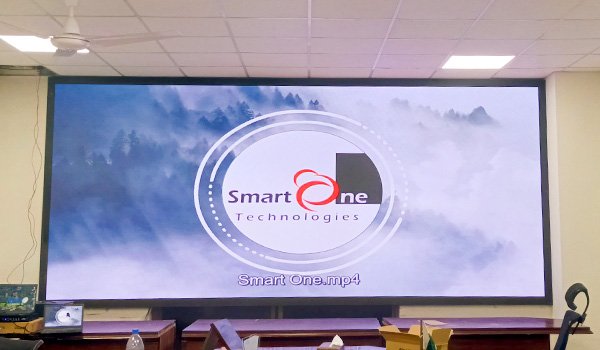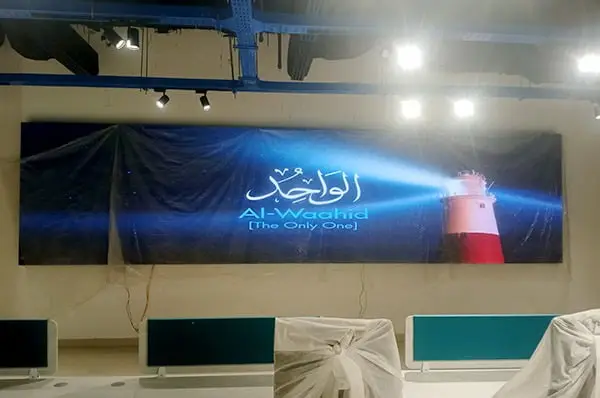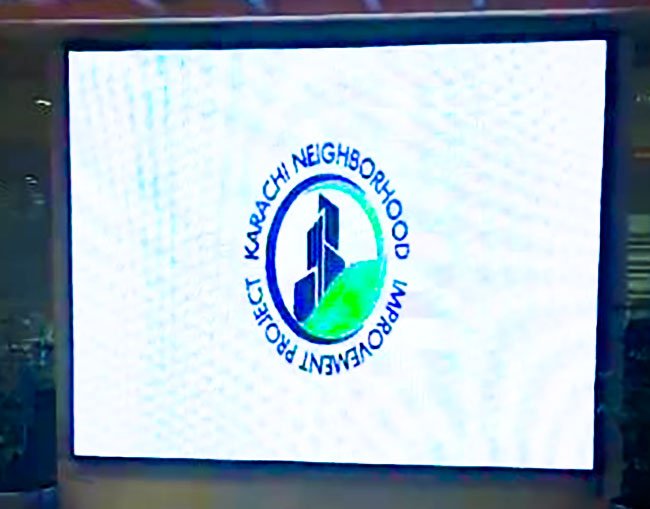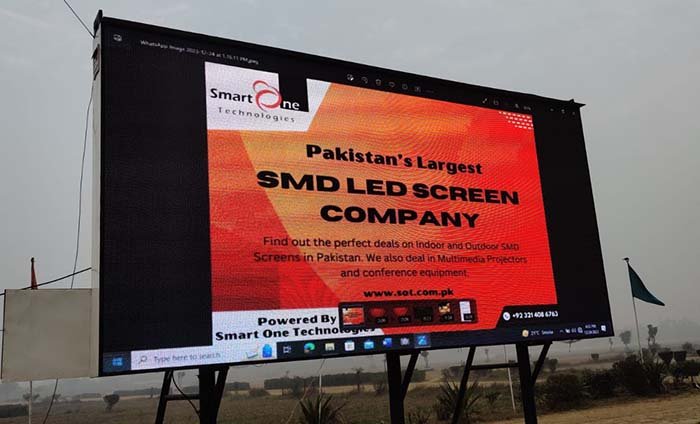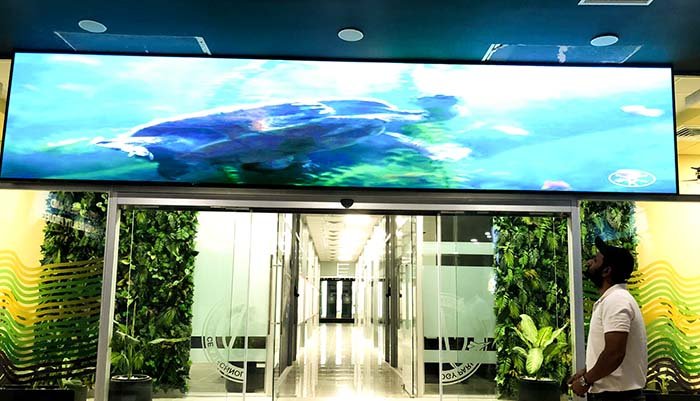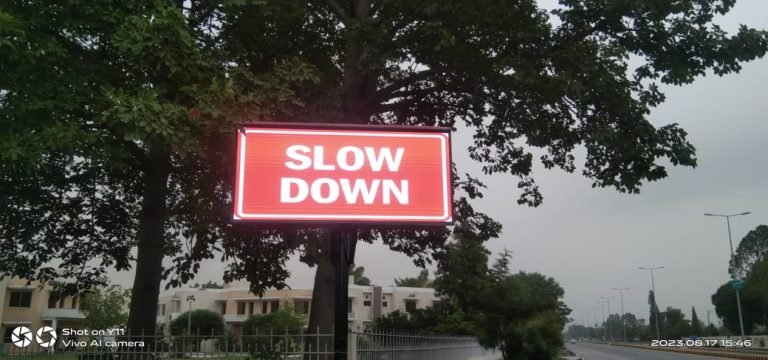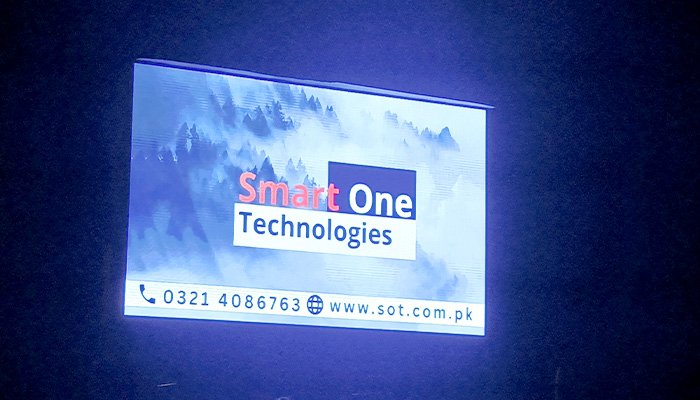Revolutionizing Display: Indoor SMD Screens at Punjab’s Population Welfare Department
In the rich tapestry of Punjab, Pakistan, where old traditions are mixed with contemporary ambitions, the Population Welfare Department (PWD) is a pioneer in the technology field. The key to this revolution is indoor surface-mount devices (SMD), high-definition screens that are not just tools but also catalysts. They are triggering discussions about mother health, family planning, and sustainable development, and their transformative effect is inspiring. The cutting-edge utilization of Indoor SMD screens by Punjab’s Population Welfare Department and explored their technological capabilities, strategic placement, and transformative effect on the population’s welfare.
Punjab’s Population Challenge and PWD’s Vision
Punjab is home to more than 127 million people and is Pakistan’s largest populous province. It is home to more than half the country’s population, according to the census in 2023. The high density of the population puts immense stress on education, healthcare, and economic resources. The goal of Population Welfare Department, with its strategic vision, is to solve these problems through promoting family planning, enhancing the health of children and mothers, and fostering an environment that allows for sustainable population growth. Communicating effectively is crucial with an estimated literacy rate of 65 per cent and a varied population that spans urban centres like Lahore and vast rural areas.
Traditional outreach methods, such as flyers, community meetings, flyers, and radio jingles, have effectively served the Population Welfare Department but are not effective in involving tech-savvy youngsters or offering immediate updates. The department has recognized this and has taken on digital innovation by implementing indoor SMD screens as its strategic plan’s mainstay. These screens complement the PWD’s larger push towards IT-driven solutions, as evident in its collaborations with the Punjab Information Technology Board (PITB).
Decoding Indoor SMD Screens
Indoor SMD screens are the latest LED displays using surface-mount technology that packs green and red diodes into one compact pixel. The design provides unbeatable quality, vibrancy and brightness, even in dim indoor lighting. Unlike earlier LED boards, SMD screens are slim, energy-efficient, flexible, and suitable for public spaces such as training centres, clinics and offices.
For those with PWD, Screens for the Population Welfare Department are installed within Family Health Clinics, Family Welfare Centers, and Regional Training Institutes across Punjab. They function as digital storytellers, sharing health tips, updates on services and educational information with a captivating visual design. Imagine a waiting room in which the screen is glowing and shows a video on children’s nutrition or displays the schedule of health camps on the move. It’s an exciting modern approach to public service.
Why SMD Screens Are a Game-Changer
The Population Welfare Department choice of Indoor SMD screens is a strategic decision driven by their unique benefits. These benefits include visual storytelling, instant content updates, broad appeal, sustainable investment, and synergy with digital goals.
1. Visual Storytelling
With high-definition displays, SMD screens convert complicated health information into easy-to-read visuals. Birth spacing infographics or animated guides to the prenatal period attract attention, particularly in areas with varying literacy levels. The visual appeal of these guides ensures that messages are remembered.
2. Instant Content Updates
The Population Welfare Department digital initiatives focus on immediate communication. SMD screens help with this by allowing staff to change information immediately, whether it’s an updated health advisory or a shift in hours for clinics–keeping the community updated and active.
3. Broad Appeal
The population of Punjab is a mixture of rural and urban, as well as old and young. SMD screens bridge the gap by offering multilingual content in Punjabi, Urdu, and English and are designed to connect with different audience members. The modern style of their screens appeals to young people immersed in the digital world.
4. Sustainable Investment
Although the initial expense for SMD screens is significant, their durability and low energy consumption make them economically feasible. Contrary to printed materials that need regular reprinting, screens refresh content electronically, freeing space for other programs.
5. synergy Digital Goals
The Population Welfare Department partnership with PITB has brought in tools such as mobile apps and data dashboards. SMD screens complement these initiatives, acting as public-facing interfaces that enhance the department’s digital presence.
Rolling Out the Screens Across Punjab
The integration of SMD screens into Population Welfare Department operation is a meticulously planned initiative. It involves thoughtful placement, curated content, a robust technical backbone, and a phased expansion strategy.
Thoughtful Placement
Screens are in high-visibility areas, including waiting rooms, clinic lobbies, and training spaces. For instance, Family Health Clinics in Multan and Rawalpindi are equipped with prominent displays that welcome guests with health information. Regional Training Institutes use screens to provide interactive training programs to their staff.
Curated Content
The Population Welfare Department has gathered a team of content creators who create engaging content, which includes:
- Animation Short videos that explain ways to plan a family or mother’s medical practices.
- Visual Guidelines Informationgraphics about contraceptive benefits and schedules of vaccination.
- Live Updates and announcements about health camps training sessions, health camps, or other special events such as World Population Day.
- Community Q&A Answers to the most common health-related questions inspired by the helpline of the Population Welfare Department.
Technical Backbone
To ensure that screens are operational, the Population Welfare Department works with technology companies to provide maintenance and support for the software. The staff is trained to manage content through training sessions led by organizations like The Health Services Academy. Systems for backup power, like solar panels for rural areas, guarantee continuous usage.
Phased Expansion
The project began with a pilot project in cities like Lahore and Faisalabad, where screens were screened for their impacts. The positive results – increased engagement with visitors and more service inquiries–instigated the expansion of the rollout. The Population Welfare Department intends to provide each of the districts in 2027.
Transforming Lives: The Impact
SMD screens have led to an unnoticed revolution in the way the Population Welfare Department serves the communities of Punjab. The most significant impacts are heightened awareness, increased service access, empowered staff, and enhanced community connection.
Heightened Awareness
Internal Population Welfare Department studies indicate an increase of 35% in the awareness of services for family planning among patients visiting the clinic since screens were first introduced. The screens’ vibrant images and repeated messages ensure that information is remembered and retained.
Increased Service Access
Live updates on the clinic’s availability and health camps on the move have led to an increase of 20% in the number of visits by patients, particularly in rural regions. Screens highlighting the dates of camp have helped encourage women to seek reproductive health services.
Empowered Staff
In training institutions, screens provide interactive content that helps staff improve their capabilities in counselling and using technology. This has resulted in better-informed, knowledgeable service providers and enhanced customer interactions.
Community Connection
Screens have become the focal point for discussion. In rural clinics where Internet access is not readily available and crowded, the screens draw crowds, encouraging discussion about families’ health and planning for their children. This type of engagement with others is an essential benefit of technology.
Digital Integration
The screens match Population Welfare Department digital tools, such as its Population Dashboard, which monitors the delivery of services. By displaying data-driven information and insights, they help reinforce the department’s commitment to transparency.
Navigating Challenges
Implementing SMD screens hasn’t been easy, and there have been difficulties. The following is how Population Welfare Department dealt with the issue:
1. Budget Constraints
Costs for the initial phase were an issue, especially for facilities with smaller budgets. The Population Welfare Department obtained grants from partners such as USAID that support Pakistan’s health initiative to help fund the project.
2. Skill Gaps
A few employees were not familiar with the digital tools. The Population Welfare Department created courses for training, drawing on the experience from universities, such as COMSATS, to increase the technical capabilities.
3. Power Reliability
The power grid was affected by outages that could have a negative impact on the screen’s functionality. The department opted for solar-powered backups to ensure continuous operation.
4. Content Sensitivity
Making universally appealing content requires a lot of finesse. The Population Welfare Department established an advisory group for diverse content that included local leaders and health experts to ensure that the content was inclusive and sensitive.
Looking Ahead: A Bright Future
This SMD screening initiative is only the beginning. The Population Welfare Department imagines:
- Interactive features Screens with touch-enabled technology to answer health-related questions in a personalized way.
- Application Connectivity Connecting screens to the mobile platforms of Population Welfare Department for an uninterrupted flow of information.
- AI Customization Utilizing AI to personalize content according to viewers’ preferences, improving engagement.
- Broader reach Expanding screens into public spaces such as bazaars and schools to increase the reach.
It is examining private-sector partnerships to finance its facilities’ expansion to cover every Population Welfare Department facility in 2030.
The stories of the heart
To glimpse the human face, I spoke with Noor, an unmarried mother visiting a Family Welfare Center in Sialkot. “The screen showed a colourful and colourful video about child health,” she told me. “It gave me a better understand why spacing between pregnancies is crucial. I even talked about the subject with my husband.” This experience demonstrates the screen’s ability to inspire and inform.
Doctor. As a Population Welfare Department regional director, Zafar Iqbal views the screens as a significant milestone. “We’re not just sharing information; we’re building trust,” said Dr. Zafar Iqbal. “These screens make our services feel accessible and modern.”
A Blueprint for Progress
In Punjab, the SMD screen initiative is an example to other provinces. Provinces such as Balochistan and Sindh are looking at similar projects and are inspired by the success of Punjab. The approach is akin to the efforts of countries such as Nigeria, where displays of digital technology help in health-related campaigns. This initiative places Punjab as a tech-driven leading state in public health.
Conclusion
The indoor SMD screens in the Punjab’s Population Welfare Department are more than just displays. They’re beacons of transformation. Through cutting-edge technology and a dedication to health for the public, The Population Welfare Department is influencing the minds and hearts of people across Punjab. From busy cities to remote villages, screens are lighting the way for a healthier and more educated future. As the department continues to develop the technology behind these screens, it will be brighter, leading Punjab towards sustainability and prosperity.

